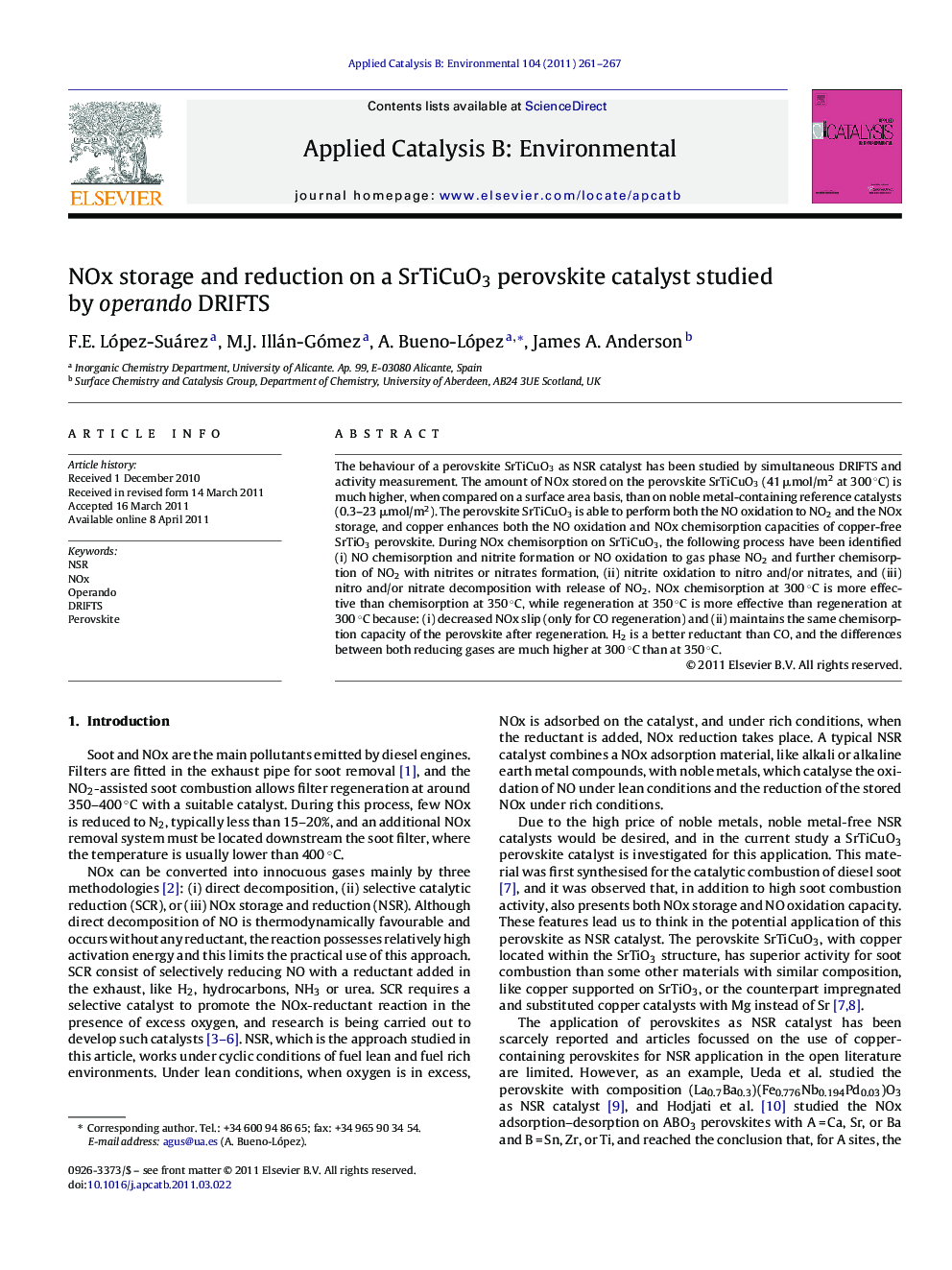| کد مقاله | کد نشریه | سال انتشار | مقاله انگلیسی | نسخه تمام متن |
|---|---|---|---|---|
| 46962 | 46454 | 2011 | 7 صفحه PDF | دانلود رایگان |

The behaviour of a perovskite SrTiCuO3 as NSR catalyst has been studied by simultaneous DRIFTS and activity measurement. The amount of NOx stored on the perovskite SrTiCuO3 (41 μmol/m2 at 300 °C) is much higher, when compared on a surface area basis, than on noble metal-containing reference catalysts (0.3–23 μmol/m2). The perovskite SrTiCuO3 is able to perform both the NO oxidation to NO2 and the NOx storage, and copper enhances both the NO oxidation and NOx chemisorption capacities of copper-free SrTiO3 perovskite. During NOx chemisorption on SrTiCuO3, the following process have been identified (i) NO chemisorption and nitrite formation or NO oxidation to gas phase NO2 and further chemisorption of NO2 with nitrites or nitrates formation, (ii) nitrite oxidation to nitro and/or nitrates, and (iii) nitro and/or nitrate decomposition with release of NO2. NOx chemisorption at 300 °C is more effective than chemisorption at 350 °C, while regeneration at 350 °C is more effective than regeneration at 300 °C because: (i) decreased NOx slip (only for CO regeneration) and (ii) maintains the same chemisorption capacity of the perovskite after regeneration. H2 is a better reductant than CO, and the differences between both reducing gases are much higher at 300 °C than at 350 °C.
Figure optionsDownload as PowerPoint slideHighlights
► The perovskite SrTiCuO3 is able to perform both the NO oxidation to NO2 and the NOx storage.
► Much higher amount of NOx is stored on the perovskite SrTiCuO3 (41 μmol/m2 at 300 °C) than on noble metal-containing reference catalysts (0.3–23 μmol/m2), when compared on surface area basis.
► NOx chemisorption at 300 °C is more effective than chemisorption at 350 °C, while regeneration at 350 °C is more effective than regeneration at 300 °C.
Journal: Applied Catalysis B: Environmental - Volume 104, Issues 3–4, 18 May 2011, Pages 261–267